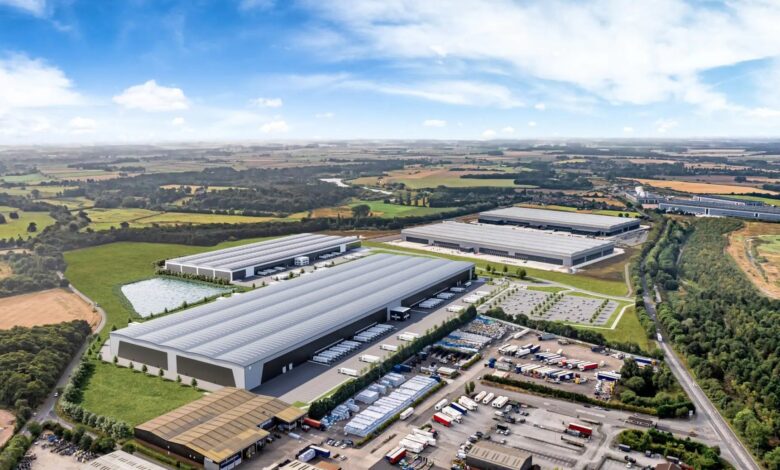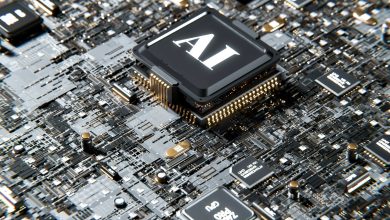
AI is set to sweep the industrial and logistics (I&L) sector. Some 63% of warehouse decision-makers plan to implement artificial intelligence (AI)-based software in the next five years, according to a study on the future of warehousing by Zebra Technologies Corporation. This growing trend is also reflected in investments such as John Lewis’ £400m spend on warehouse automation, and McKinsey’s estimation that AI reduces logistics costs by 15%, reduces inventory levels by 35%, and improves service levels by 65%. All this demonstrates the value that AI-optimised warehouses can bring to the I&L arena.
A key factor in driving this trend is the unprecedented disruption supply chains are facing as a result of global tensions, with higher shipping costs, trade flow disruptions and raised tariffs all creating volatility. In this environment, AI can deliver cheaper, more efficient, and more resilient supply chains for I&L through automated warehouse design as well as software such as inventory forecasting, robotic automation, and warehouse management systems.
By future-proofing the warehouses of today, as Panattoni has done as one of the initial pioneering partners to register for WiredScore accreditation in I&L, which recognises technologically resilient and innovative infrastructure, businesses can address their supply-chain challenges and be empowered with the agility and connectivity to succeed.
Implementing efficiencies
The UK warehouse market has grown by 61% between 2015 and 2024, with large warehouses and e-commerce at the forefront of this, according to Savills. AI is increasingly instrumental in implementing efficiencies in warehouse developments, and ensuring they are responsive to the needs and pressures of supply chains. Developers and operators can use AI and machine learning to optimise operations, including the warehouse layout and space utilisation during the planning phase, forecast future logistics demand to scale facilities appropriately, and automate construction and fit-out processes, speeding up building altogether.
Tenants can benefit similarly, predicting patterns in demand and forecasting inventory needs to appropriately purchase orders, maximising warehouse space while providing real-time visibility of stock and operations. AI-driven inventory management and workflow orchestration can also minimise picking and shipping errors, in turn, leading to a reduced need for re-work or re-deliveries, and improved service level agreements compliance.
Labour and delivery demands
The I&L labour market has historically had to contend with skills shortages. A survey last year indicated that 76% of supply chain and logistics leaders are experiencing notable workforce shortages, and Logistics UK issued a warning in March on labour risks despite skills shortages easing.
AI and robotics are able to automate repetitive manual tasks such as pallet moving, picking, and slotting, as well as transport materials using autonomous mobile robots, and manage forklifts. Integrating AI can help reduce dependency on manual labour, particularly in regions facing such shortages, but also support productivity goals while reducing physical strain and the risk of injury for labourers. This also allows employees to shift into more supervisory or tech-enabled roles, upskilling the workforce.
Furthermore, AI can help manage an increased demand for last-mile deliveries, particularly driven by e-commerce. By integrating predictive analytics, route optimisation, and automated resource allocation, AI helps streamline last-mile delivery operations and reduce bottlenecks. According to DHL, predictive analytics can increase delivery efficiency by up to 30%, and the development of micro-fulfillment centres and urban distribution hubs as last-mile sites can utilise machine learning to deliver fully automated picking and distribution. This allows warehouses to handle a larger number of orders more effectively and improve convenience for customers, which Panattoni has implemented for French multinational retailer Auchan in Poland, in partnership with Ocado.
Fleet and route optimisation also utilise AI to analyse traffic patterns, delivery locations, vehicle capacity and weather conditions, altogether reducing travel time and fuel consumption, aligning with sustainability goals.
Automation and sustainability
Route optimisation is not the only use for AI and automation in enhancing the sustainability of the I&L supply chain. As sustainability continues to move up the I&L agenda, AI is playing a crucial role in designing greener infrastructure. Automated packaging systems can reduce usage of packaging materials, such as plastics and cardboard, and smart inventory management can minimise wastage of stock.
AI also plays a key role in energy efficiency, helping avoid energy inefficiencies from faulty equipment. As the most accredited sustainable industrial and logistics developer in Europe, Panattoni’s warehouses implement energy management systems to reduce excess energy usage and comply with BRE standards. Such systems, with the use of AI, can adjust lighting, heating, and cooling based on occupancy and usage patterns, optimise robotics workflow to reduce idle machine time and lower energy consumption, and manage storage of renewable energy, such as solar panels. These all reduce operational costs for businesses.
As AI adoption accelerates across the I&L sector, businesses are increasingly aware of its benefits in enabling and optimising smarter, faster and more resilient warehousing. At Panattoni, we recognise the supply chain demand for these best-in-class agile warehouses and are embedding AI-driven systems into our infrastructure to support the evolving needs of modern businesses.





